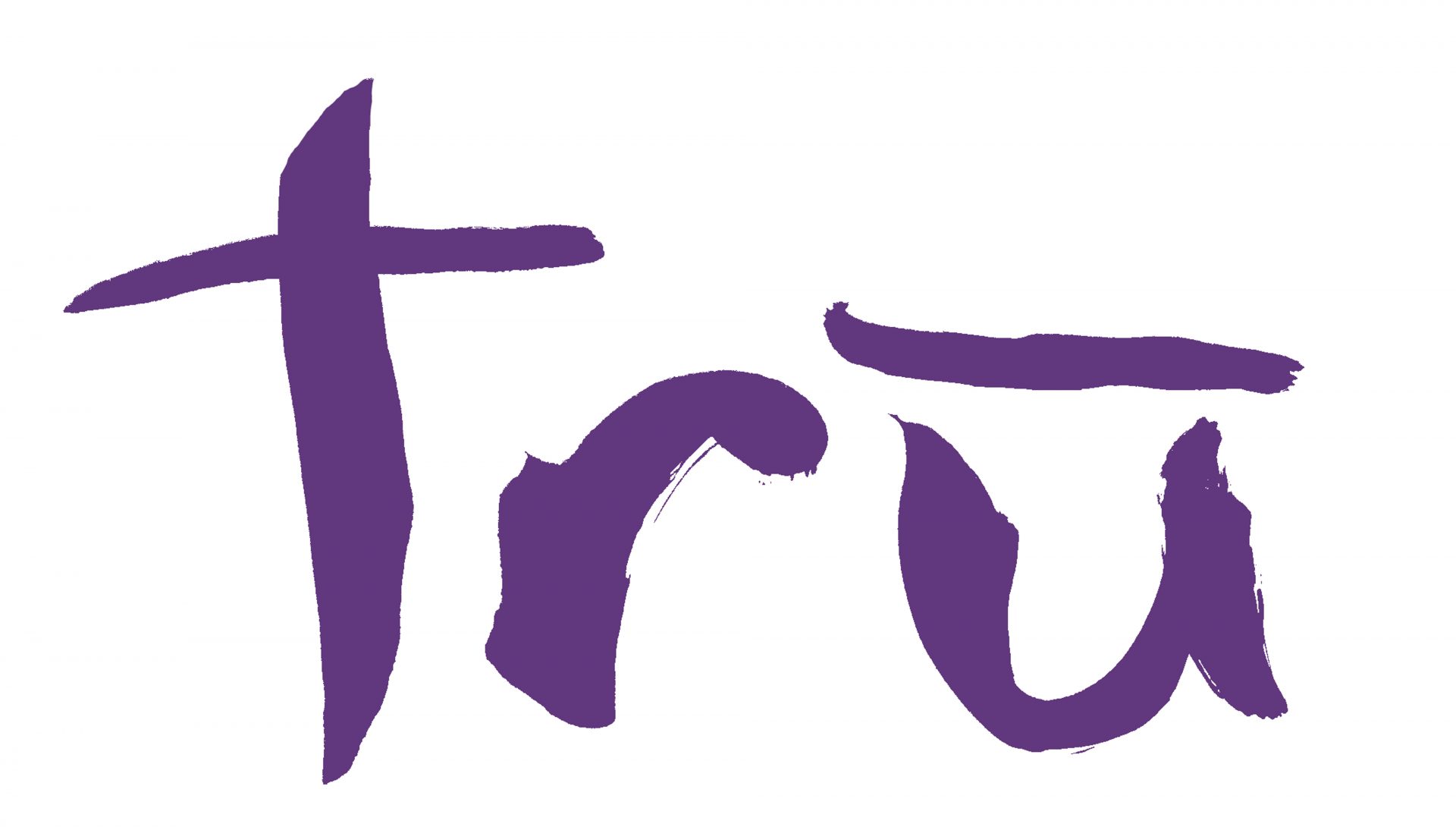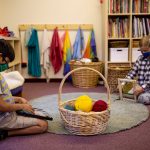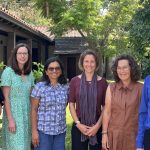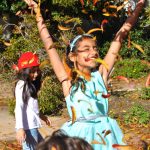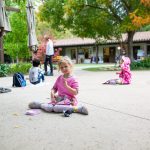Routine and ritual create a heartbeat at the center of school.
All people — especially young children — benefit from following a rhythm in their day that creates balance among all the demands they face.
This rhythm begins at Trū with a period called “welcoming.” Hanging up one’s backpack and greeting the teacher at the door, a child sees others engaged in simple activities like building designs or reading their books from the Palo Alto Children’s Library, which they visit every other week.
Later the teacher rings a bell and invites everyone for a run around the courtyard in preparation for morning meeting. In a circle, everyone faces the candle and takes some time to settle their bodies. The teacher asks them to close their eyes and visualize their animal friend coming to play with them. The lights are off, and the room becomes a little more peaceful while the teacher talks.
It is time for “number mysteries.” Students retrieve their work from the day before and gather the materials they need. In one activity called “Rod Trains,” a child rolls a die several times and finds the rods with the right lengths, placing them end to end until the train goes as far as she can reach. Then she uses tens to measure the whole train; the teacher helps her write the numbers down on her paper.
At snack children sit with friends and talk about what they are going to play outside. Many of them might be interested in finding “roly polies” in the grass. Some are riding “easy rollers” around the courtyard; others are playing a dramatic imaginary game on the lawn. A child starts playing the musical drum to signal the end of play time.
Back in the classroom, the teacher reads everyone a story. The children remember and talk about a block building project from the day before — such as a water system for a city, with pipes carrying the water to everyone’s buildings. The teacher then talks about how a story is imagined, and Writer’s Studio begins. Students use words and pictures to create their own stories, steadily building their vocabulary and narrative skills.
At lunch time the children join partners from other classes, and everyone walks together past the Children’s Library to Rinconada Park. They eat at the picnic tables and talk animatedly again with their friends. When lunch is finished, they move to the playground to run, swing, and climb. After a long hour, it’s time to walk back.
The afternoon is given to projects, for example by placing several different kinds of plant under a black box to see how much light different plants need to survive. At the end of the day the teacher may read another story. A child might ask to put a rock in the basket because he loves the story’s ending. The teacher wishes everyone a peaceful journey!
Continue exploring what Trū has to offer
